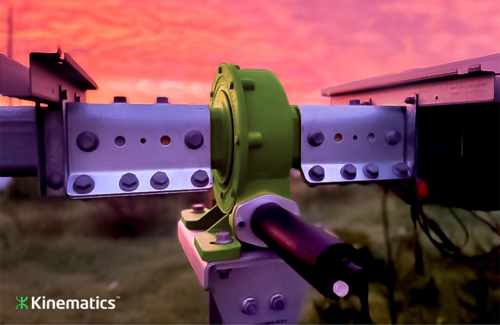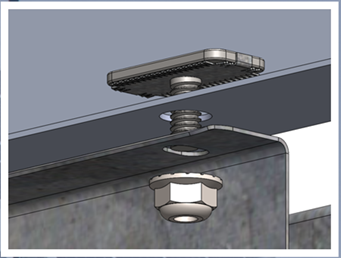不难想象一个世界,在这个世界中,支持人工智能(AI)的系统运行着我们世界上的发电厂,太阳能和其他地方。尽管人工智能运行发电设施的时间可能会更遥远,但机器学习,自动化数据分析和工业物联网(IIoT)的日益普及的应用已开始在包括能源在内的多个业务领域产生深远影响代。过去,我们似乎淹没在没有有意义洞察力的数据海洋中,这些工具已经开始创建信息丰富的环境,使我们能够做出更好的决策,并使我们迈向更高的效率,控制,正常运行时间和盈利能力。

大数据,机器学习和IIoT技术提供了许多机会,以推动性能,效率和成本节省达到新的水平。数字资产管理和运营非常重要。现在是时候通过数据连接和分析来创造价值,重新定义资产管理和运营,重点是数据如何帮助太阳能和存储资产所有者,维护团队和运营商优化工厂绩效,减少停机时间并最大程度地提高财务回报。
预测分析和自动根本原因分析(RCA)是可以增强数字资产管理的两种最强大的机器学习技术。随着数据量的增长和多样化,可以使用诸如回归建模之类的工具来执行预测分析,以分析现场变量之间的关系并在这些大型数据集中找到模式,以预测未来事件。自动化RCA使用诸如监督学习算法之类的技术来确定为什么特定组件或系统在现场遇到问题。
预测分析在数字资产管理中的价值在于能够以充足的提前时间预测即将发生的问题。这一点至关重要,因为它不仅可以减少任何潜在的生产停机时间,而且还可以通过有效的流程进行主动的纠正性维护,从而节省大量成本。在NEXTracker,我们唾手可得的所有数字资产信息,我们可以从全球超过40万个传感器嵌入式,互联网连接的跟踪器系统中抓取和分析数据。
我们可以远程检测和管理问题,甚至可以在客户报告之前做出反应。通过收集历史传感器数据(例如跟踪器角度,电动机电流,与天气有关的数据和其他输入),我们可以捕获有关特定现场问题的信息,包括组件级和站点级的问题。在发现和识别现场问题之前运行此类预测分析的能力达到了平衡,可以优化维护并降低成本。
关于设备问题的根本原因分析,许多制造商传统上都依赖现场专家知识。得益于数据分析和机器学习的重大进步,可以使用自动化方法执行根本原因分析。自动化RCA的价值可以转化为花费更少的时间来解决问题,而将更多的时间花费在实际修复和(重要的)预测并积极应对上。
自动化的RCA受益于分析来自现场设备的传入传感器数据并对该数据执行时间序列分析的能力。可以确定与正常健康运行状况以及异常状况相关的趋势和数据签名。可以针对不同异常系统地建立此类数据签名的存储库,然后在遇到现场问题时将其用于自动RCA。最终,软件将自动创建工单以解决任何此类问题。
作为上述机器学习技术和高级数据分析的应用示例,让我们考虑以下场景:在这些跟踪器系统中,安装差异会导致现场问题。尽管许多EPC公司所做的工作都是出色的,但竣工条件的质量和一致性在各个站点之间以及在全球范围内确实存在很大差异。使用从空中检查中获得的有关跟踪器码头高度以及跟踪器角度和电动机电流等因素的数据来移动跟踪器,承包商和资产所有者,这些数据可以解决施工过程中和施工后变化的影响,并在施工过程中将其最小化。未来。
最终目标将是基于准确的预测和计划,使太阳能和存储资产的管理和运营完全自动化,其中将正常运行的资产的数字双胞胎用作与实时性能进行比较的蓝图,并自动检测异常和标记不健康的趋势,并将停机时间降至最低。在不久的将来,有一天,这些越来越智能的,数据连接的系统将结合神经网络和深度学习功能,这是真正的AI的基础。
原文:
It’s not difficult to imagine a world where artificial intelligence (AI) -enabled systems operate our world’s power plants, solar and otherwise. Although the time when AI runs generation facilities may be a bit farther down the road, the increasing application of machine learning, automated data analysis and the Industrial Internet of Things (IIoT) has begun to make a profound difference in several business sectors—including energy generation. Where in the past we seemed to be drowning in a sea of data without meaningful insights, these tools have started to create information-rich environments, allowing us to make better decisions and putting us on the path toward greater efficiency, control, uptime and profitability.
There is a plethora of opportunities provided by big data, machine learning and IIoT technology to drive new levels of performance, efficiency and cost savings. Digital asset management and operations are very much part of this narrative. It’s time to redefine asset management and operations by creating value through data connectivity and analytics, focusing on how data can help solar and storage asset owners, maintenance teams and operators in optimizing their plant performance, reducing their downtimes and maximizing their financial returns.
Predictive analytics and automated root cause analysis (RCA) are two of the most powerful machine learning techniques that can enhance digital asset management. As the amount of data grows and becomes more diverse, tools such as regression modeling can be used to perform predictive analytics to analyze the relationship between variables in the field and to find patterns in these large data sets, with the goal of predicting future events. Automated RCA uses techniques such as supervised learning algorithms to identify why a particular component or system has experienced an issue in the field.
The value of predictive analytics in digital asset management lies in the ability to predict impending issues with ample look-ahead time. This is critical because it provides huge cost savings not only by reducing any potential production downtime but also by enabling an efficient process for proactive corrective maintenance. At NEXTracker, with all the digitized asset information at our fingertips, we can scrape and analyze data from more than 400,000 sensor-embedded, Internet-connected tracker systems worldwide.
We can detect and manage issues remotely and react even before our customers report it. By gathering historical sensor data such as tracker angles, motor currents, weather-related data and other inputs, we can capture information about specific field issues, including component- and site-level concerns. The ability to run such predictive analytics in detecting and identifying field issues before they occur strikes a balance that optimizes maintenance and drives down costs.
When it comes to root cause analysis for equipment issues, many manufacturers have traditionally relied on onsite expert knowledge. Thanks to significant advances in data analytics and machine learning, root cause analysis can be performed using automated methods. The value of automated RCA translates into spending less time figuring out the problem and more time spent on actually fixing and—importantly—predicting it and dealing with it proactively.
Automated RCA benefits from the ability to analyze incoming sensor-data from field equipment and performing a time-series analysis of this data. Trends and data signatures associated with regular healthy operating conditions as well as anomalous conditions can be identified. A repository of such data signatures can be systematically built up for different anomalies that can then be used for automated RCA whenever a field issue is encountered. Eventually, work orders will be created automatically by the software to resolve any such issues.
As an example of application of these aforementioned machine learning techniques and advanced data analytics, let’s consider the scenario where there are field issues from installation variances within these tracker systems. While many EPC firms do stellar work, the quality and consistency of as-built conditions does vary significantly from site to site and around the world. Using the data garnered from aerial inspection on such factors as tracker pier height as well as tracker angles and motor currents drawn to move the trackers, contractors and asset owners can address the impacts of variabilities during and after the construction process—and minimize them in the future.
The ultimate goal will be to fully automate solar and storage asset management and operations based on accurate forecasting and planning, where a digital twin of a healthy functioning asset will be used as a blueprint to compare with real-time performance and to automatically detect anomalies and flag unhealthy trends—and reduce downtime to a bare minimum. One day in the not-too-distant future, these ever-smarter, data-connected systems will incorporate neural networks and deep learning capabilities—the building blocks of true AI.












